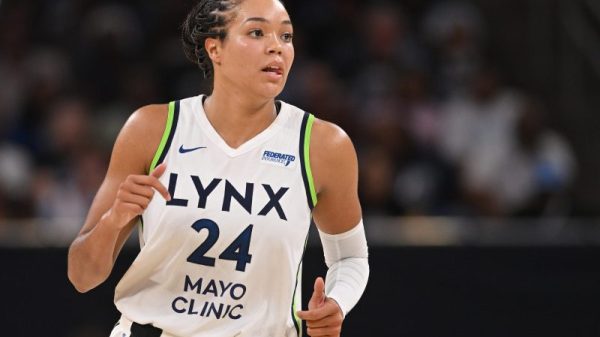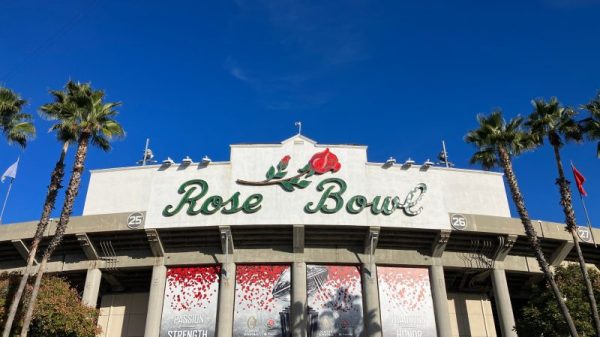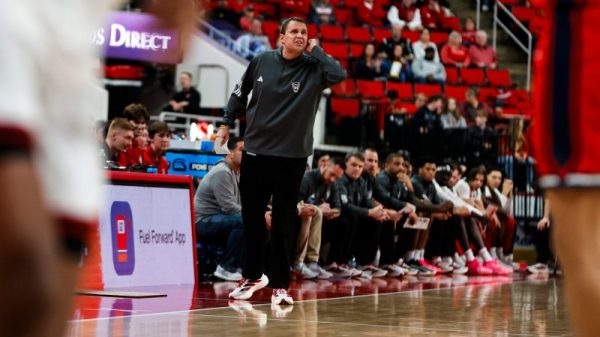Rhode Island officials recently announced the proposed location of a place where people could safely use illegal drugs under the watch of staff trained to reverse overdoses — only the second such program in the United States. Visitors would also be able to get meals and showers, test their own drugs for deadly substances, get HIV and hepatitis C testing, and access support groups and addiction treatment.
“We know people’s lives are going to be saved,” said Colleen Daley Ndoye, executive director of Project Weber/Renew, the nonprofit tasked with running the Providence site slated to open next year.
But in Pennsylvania, where another nonprofit with similar aspirations is mired in litigation, the Pennsylvania Senate overwhelming voted May 1 to ban such centers, sometimes called supervised injection sites. The vote came six days after Colorado lawmakers killed a bill in committee that would have authorized the sites in that state.
“We need to prioritize sobriety, not just allow addiction to continue and spiral,” said Pennsylvania state Sen. Christine Tartaglione, a Philadelphia Democrat, who introduced the bill and represents parts of the neighborhood of Kensington, the epicenter of the city’s opioid epidemic.
The contrasting approaches reflect the wariness of overdose prevention sites in the United States despite the staggering loss of life from drug deaths. Addiction experts and others regard the facilities as ways to reach people who use drugs where they are — and keep them alive — despite questions about the sites’ legality under federal law. But even with the success of New York City’s OnPoint NYC, the only government-sanctioned program operating in this country, such facilities are proving a tough sell over concerns they encourage drug use, crime and neighborhood blight. Similar sites operate in countries such as Canada, Australia and Portugal.
The legislative decisions in Pennsylvania and Colorado also are a blow for advocates of expanding harm reduction, a strategy that includes distributing overdose antidotes, sterile needles and testing drug supplies.
“This is a major step backwards in responding to the overdose crisis, especially at a moment when we’re witnessing more support for harm reduction nationally and across red and blue states,” Brown University epidemiologist Brandon Marshall said of the votes.
The Pennsylvania bill banning overdose prevention centers passed the Republican-controlled Senate with Democratic support. Whether it passes the Democratic-majority House remains to be seen. Democratic Gov. Josh Shapiro, a former state attorney general, has publicly opposed the facilities.
In Colorado, where Democrats control both chambers, the state Senate’s Health and Human Services committee on April 26 killed a bill that would have allowed cities to authorize the sites. The House had earlier passed the bill.
Official statement from the HB23-1202 coalition for the local control of Overdose Prevention Centers on the bill’s failure tonight in the Colorado Senate Health & Human Services Committee: pic.twitter.com/Uh8ZIHb929
— Colorado Drug Policy Coalition (@ColoradoDPC) April 27, 2023
Sometimes called “safe consumption” or “supervised injection” sites, the facilities allow people to use their own drugs under the supervision of people trained to intervene with the opioid antidote naloxone if they overdose. Nearly 200 overdose prevention sites operate in 14 countries, according to the Drug Policy Alliance.
The centers aren’t a fit for every community, but they do offer people struggling with addiction a welcoming place to get health care, aid in finding housing and treatment — and help staying alive, said Sean Fogler, a Pennsylvania drug policy expert who runs the public health consultant group Elevyst.
“If you do give them a clean needle, why then would you tell them to go to the bathroom at McDonald’s and lock the door, or go to the alley and hide in the shadows and inject the drugs?” Fogler said. “With the drug supply today, there’s a good chance you’re going to die.”
Advocates say research shows overdose prevention sites make drug use safer for participants. At last month’s Harm Reduction International Conference, researchers from France presented a study that found that at two overdose prevention sites there, users were less likely to overdose, visit emergency rooms or commit crime.
But the facilities have proved controversial in the United States, despite the mounting death toll: more than 107,000 fatal overdoses in 2021, two-thirds of them from the opioid fentanyl. In Pennsylvania, 5,168 people died of overdoses in 2021.
Efforts to establish overdose prevention centers have been complicated by a decades-old federal law sometimes called the “crack house statute,” which outlawed knowingly maintaining a place “for the purpose of manufacturing, distributing, or using a controlled substance.”
In 2019, President Donald Trump’s Justice Department cited the law in suing Safehouse, a nonprofit group that would have been the first in the nation to open an overdose prevention center in Philadelphia, where it faced fierce opposition from neighbors. A federal judge ruled in Safehouse’s favor, but an appeals court overturned the decision in January 2021.
Safehouse countersued, saying such a ban violates the religious freedom of board members who believe they have a calling to “provide lifesaving medical treatment to a vulnerable population.” The Biden administration, the first to embrace harm reduction strategies, has stopped short of endorsing such prevention sites. Settlement talks between the Justice Department and Safehouse have dragged on for over a year.
The Justice Department declined to comment on the status of those talks. Last year, it told the Associated Press it was “evaluating” overdose prevention sites and “appropriate guardrails.” The litigation was further complicated last month when 20 community groups in Philadelphia asked to intervene, arguing the “government appears poised to switch sides” and they needed to protect “their health, safety, and property interests.”
Sonja Bingham, a community activist from Philadelphia’s Harrowgate neighborhood, said residents are tired of drug users from nearby Kensington defecating on the streets, discarding needles and breaking into properties. She said she believes an overdose prevention center will bring more users and drug dealers.
“You can have your addiction, but you don’t have the right to impede on my quality of life,” said Bingham, president of the Friends of Harrowgate Park, one of the groups asking to intervene.
Safehouse’s vice president, Ronda Goldfein, pushed back on such criticism, arguing that moving drug use into prevention centers will curb use on the streets. “This isn’t complicated,” she said. “It works everywhere it’s opened. It should be open here.”
Goldfein declined to speculate how the Senate bill banning overdose prevention sites would impact the settlement talks if it were to become law.
Right now, the only government-approved safe consumption program is run by the nonprofit OnPoint NYC, which operates two facilities: one in East Harlem, the other in Washington Heights. The program connects participants to addiction and mental health treatment, job training and social services. Since opening in late 2021, over 3,200 participants have used the sites, with staff intervening in 898 overdoses — with no deaths. Staff members also have collected 1.7 million pieces of drug Baggies, discarded needles and used bandages.
“That’s 1.7 million units of hazardous waste not on the streets, not in parks, not on playgrounds,” said executive director Sam Rivera, who was recently named one of Time magazine’s 100 most influential people of 2023.
Despite those successes, securing private funding has been a constant worry — it costs $1.4 million annually to operate the prevention centers. Although New York City authorized the sites and supports their operations, the governor’s office has declined to allocate opioid settlement money over questions of legality under federal law. Rivera said he is hopeful the organization will secure funding to keep going.
While advocates of future overdose prevention centers await the outcome of the Safehouse litigation, they are learning from the experiences of New York, Pennsylvania and California, where last year, Gov. Gavin Newsom vetoed a bill that would have authorized overdose prevention centers in three cities.
In San Francisco, an emergency harm-reduction hub set up in the troubled Tenderloin district early last year by the city also allowed people to use their own drugs under watch. At the Tenderloin Center, staff intervened in 333 overdoses over 46 weeks before the city shut it down in December, saying it was supposed to be temporary.
Participants were served nearly 100,000 meals, and they also got showers, laundry, wound care and referrals to treatment and therapy.
“The longer people were there, they were more likely to be engaged in a whole host of other services,” said Alex Kral, an epidemiologist with the independent nonprofit research institute, RTI International.
But participants also described long wait times and shortages of staff and supplies. And because San Francisco required calls to 911 every time naloxone was used to revive someone who overdosed, it created a constant stream of ambulances to the site, raising concerns with neighbors.
Still, San Francisco has authorized private organizations to open sites. The mayor’s office said it supports the concept and is awaiting guidance from the federal government over whether public money can go toward them.
Other communities aren’t waiting to make such spending decisions. In Somerville, Mass., a largely blue-collar community just north of Cambridge, the city council allocated $827,000 for site preparation, construction and the purchase of a prefabricated building for such a center, although no location has been determined and officials are still awaiting clarity on legalities, said Matt Mitchell, Somerville’s prevention services director.
In Rhode Island, the legislature in 2021 authorized its overdose prevention program. The state allocated $2.6 million in opioid lawsuit settlement money to fund the pilot’s first year-plus. The site will be located at an existing opioid treatment clinic in an industrial part of Providence with no residential neighbors, which officials hope will lessen community concerns.
Nevertheless, staff members have been knocking on the doors of homes in nearby neighborhoods to answer questions about the facility. Project Weber/Renew — a long-established harm-reduction group which will run the program in conjunction with the opioid treatment clinic CODAC Behavioral Healthcare — must iron out design, construction and public-safety plans as it seeks approval from Providence’s city council.
Daley Ndoye, of Project Weber/Renew, said she is closely watching what happens with state legislation and the Justice Department settlement talks in Pennsylvania.
“I want these sites to be open across the country,” she said. “I want people’s lives to be saved.”



























